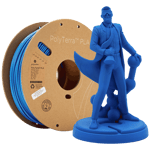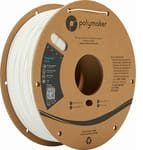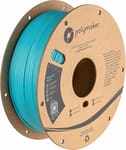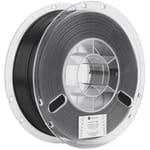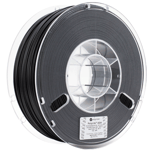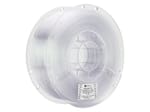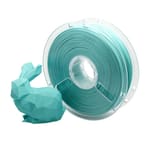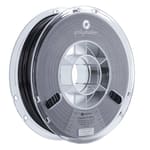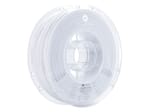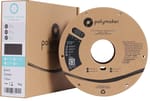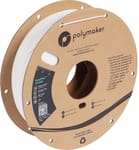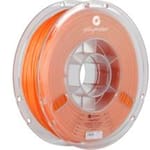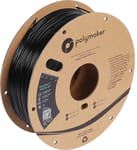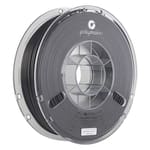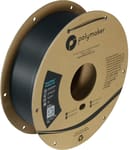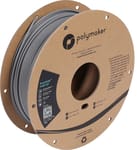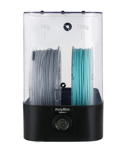Polymaker is a company involved in the fused deposition modeling (FDM) 3D printer filament space. They have a variety of offerings for different needs, from PLA to filament optimized for casting, and they also have hardware solutions for filament storage and post-processing.
Their filaments are grouped by families, each one addressing different needs or providing distinct properties, from straightforward daily use to flexible and durable materials as well as soluble support options.
In this article, we’ll cover Polymaker’s offerings and their applications. These will include the types of filaments within each family, the price points, and other helpful information that may be relevant in terms of intended use.
Note that we’ll be specifying color availability as listed at the Polymaker store, so there may be some variations depending on location and retailer.
Before we look at the specific brands and materials, let’s look a bit closer at Polymaker’s history.
Origin
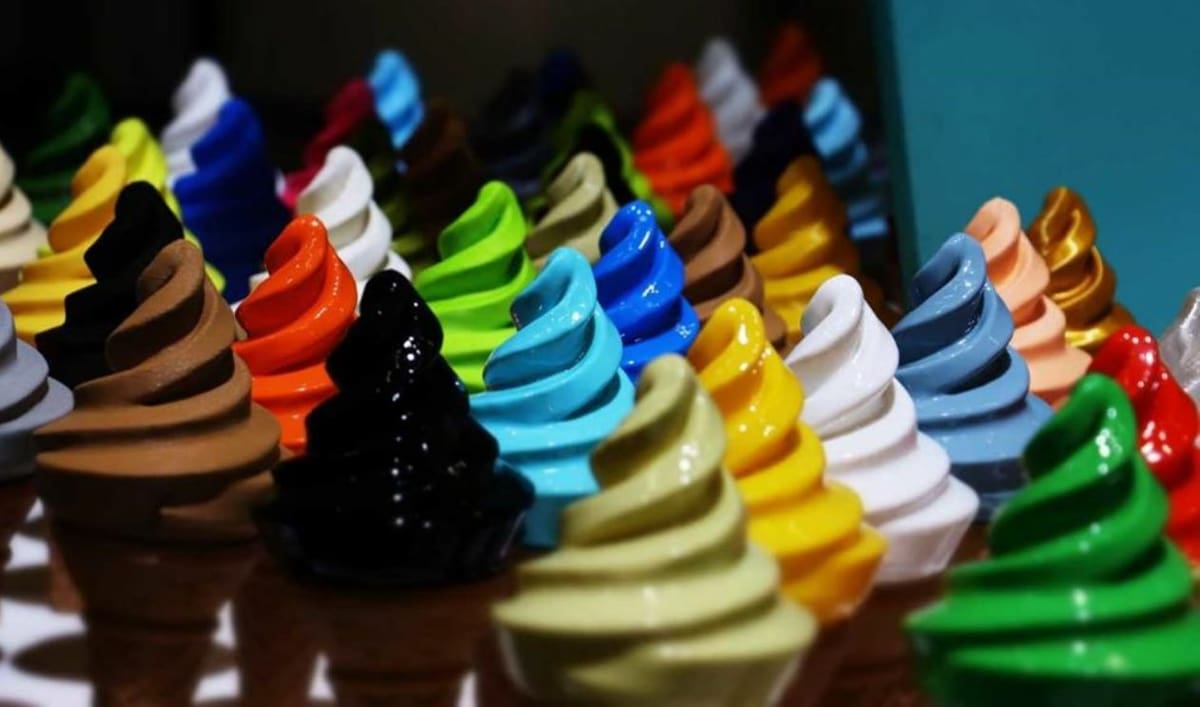
To get a clearer idea of the brand as a whole, it’s useful to take a look at its origin.
Polymaker was founded by four materials scientists, Ph.D. students in Changshu InnoPark in China in 2013. To say that their goal was ambitious was an understatement: They wanted to make the best 3D printer filament in the industry – and at an affordable price. This is no easy feat, but after a significant journey, their current scale is nothing short of impressive, showing that their goal was, indeed, achievable.
Their first major development was increasing the softening point of PLA in their filaments, allowing for far less extruder jamming and an easier user experience.
While the first order of their new product was for 166 rolls for a local shop, they have since grown and have distribution lines in North America, Europe, and Asia, and they continue to grow in the digital environment as well.
Next, we’ll go over the filament families.
Filaments
PolyTerra

The PolyTerra filament series is Polymaker’s environmentally conscious line of 3D printer filament. While polylactic acid (PLA) is typically derived from the sugars in corn, sugarcane, or cassava, the filament spool itself contributes to a lot of the environmental impact.
This line of filament features a completely recyclable cardboard spool that provides the same durability and functionality as plastic spools, but with the benefit of being less harmful to the environment.The shift to cardboard spools was so well received that Polymaker announced that it would be phasing out plastic spools across all filaments and replacing them with cardboard rolls.
This initially posed problems as some materials such as nylon require heating to high temperatures. Finding a glue to assemble the spool that could withstand these temperatures posed a challenge, but Polymaker was able to make the shift, contributing to their image as an eco-conscious organization.
The PolyTerra series is differentiated by finish and includes matte, dual matte, gradient matte, dual-gradient matte, marble, and satin PLA+. The summary below is based on the matte finish.
- Colors: 36, including mint, peach, lava red, and sapphire blue
- Sizes: 1.75 mm, 2.85 mm; 1 kg, 3 kg
- Recommended settings: 190-230 °C hot end temp; 25-60 °C bed temp; 30-60 mm/s print speed
- Price: ∼$21/kg
PolyLite

PolyLite seeks to offer a wide variety of multipurpose materials for the amateur on a budget. These filaments are best used for general-purpose models as opposed to parts that will endure stress. The line features filaments made from PLA, PETG, ABS, ASA, and PC. Other variations are offered with respect to additions such as glitter, glow-in-the-dark, and silky finishes.
One of the more interesting offerings in this line is their light-weight PLA (LW-PLA), which has a foaming agent to increase volume while maintaining structure and mass, creating a lighter-weight model.
Even while being the economical version of their higher-end products, the filament line as a whole is quite easy to print with, with fairly good reviews with regard to jamming. The strength of the filament will vary based on the material you choose, but as a rule of thumb, this filament is designed for bulk printing or when the price is a major consideration.
PLA
- Colors: 29, including black, white, green, purple, and natural
- Sizes: 1.75 mm, 2.85 mm; 1 kg, 3 kg, 5 kg
- Recommended settings: 190-230 °C hot end temp; 25-60 °C bed temp; 40-60 mm/s print speed
- Price: ∼$23 /kg
PETG
- Colors: 21, including black, white, green, purple, and natural
- Sizes: 1.75 mm, 2.85 mm; 1 kg, 3 kg, 5 kg
- Recommended settings: 230-240 °C hot end temp; 70-80 °C bed temp; 30-50 mm/s print speed
- Price: ∼$23/kg
ABS
- Colors: 17, including black, white, teal, and orange
- Sizes: 1.75 mm, 2.85 mm; 1 kg, 3 kg, 5 kg
- Recommended settings: 245-265 °C hot end temp; 90-100 °C bed temp; 30-50 mm/s print speed
- Price: ∼$23/kg
ASA
- Colors: 21, including white, black, gray, red, blue
- Sizes: 1.75 mm, 2.85 mm; 1 kg, 3 kg, 5 kg
- Recommended settings: 240-260 °C hot end temp; 75-95 °C bed temp; 30-50 mm/s print speed
- Price: ∼$30/kg
PC
- Color: Transparent
- Sizes: 1.75 mm, 2.85 mm; 1 kg, 3 kg
- Recommended settings: 250-270 °C hot end temp; 90-105 °C bed temp; 30-50 mm/s print speed
- Price: ∼$30/kg
PolyMax
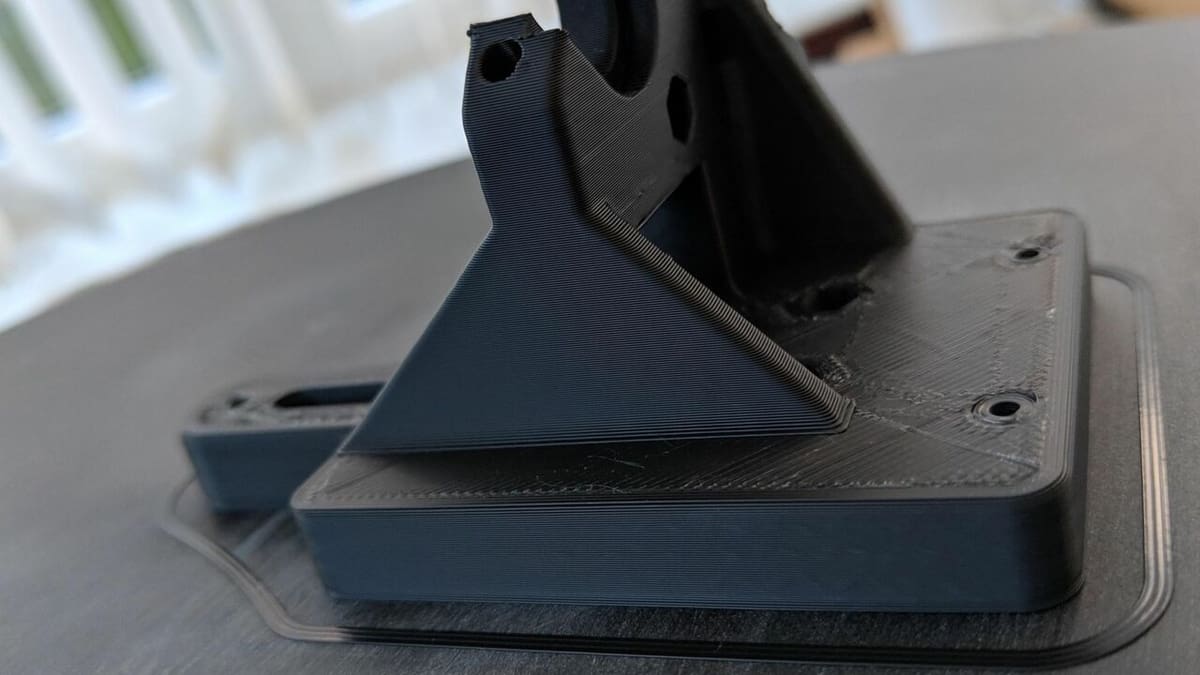
Polymaker’s PolyMax filament series is engineered to deliver the mechanical properties of ABS while maintaining the ease of use that PLA provides. The filament itself uses their nano-reinforcement technology which increases the level of impact the filament can take. It also makes it more ductile, which is to say that the filament will deform prior to fracturing, something that tends to be a sought-after quality.
While not providing the level of flexibility of rubber, the filament can withstand more bends before a complete deformation, according to consumers. The filament remains easy to print with and provides some great features.
These features, however, do come at a steeper cost. The series is offered in PLA, PETG, PC, and PC-FR (flame retardant), providing a wide variety of properties and prices. This filament should be used for parts that will likely endure stress or require significantly more strength. Additionally, it features Polymaker’s jam-free technology, which helps it to print smoothly. PolyMax is a good choice for a functional prototype or high-strength part.
PLA
- Colors: 12, including blue, red, yellow, green, and purple
- Sizes: 1.75 mm, 2.85 mm; 0.75 kg, 3 kg
- Recommended settings: 190-230 °C hot end temp; 25-60 °C bed temp; 40-60 mm/s print speed
- Price: ∼$44/kg (∼$33/0.75-kg spool)
PETG
- Colors: Black, white
- Sizes: 1.75 mm, 2.85 mm; 0.75 g
- Recommended settings: 230-240 °C hot end temp; 70-80 °C bed temp; 30-50 mm/s print speed
- Price: ∼$44/kg (∼$33/0.75-kg spool)
PC
- Colors: Black, white, gray, blue, red
- Sizes: 1.75 mm, 2.85 mm; 0.75 g, 3 kg
- Recommended settings: 250-270 °C hot end temp; 90-105 °C bed temp; 30-50 mm/s print speed
- Price: ∼$53/kg (∼$40/0.75-kg spool)
PC-FR
- Colors: Black, white
- Sizes: 1.75 mm; 1 kg
- Recommended settings: 250-270 °C hot end temp; 90-105 °C bed temp; 30-50 mm/s print speed
- Price: ∼$55/kg
PolyFlex
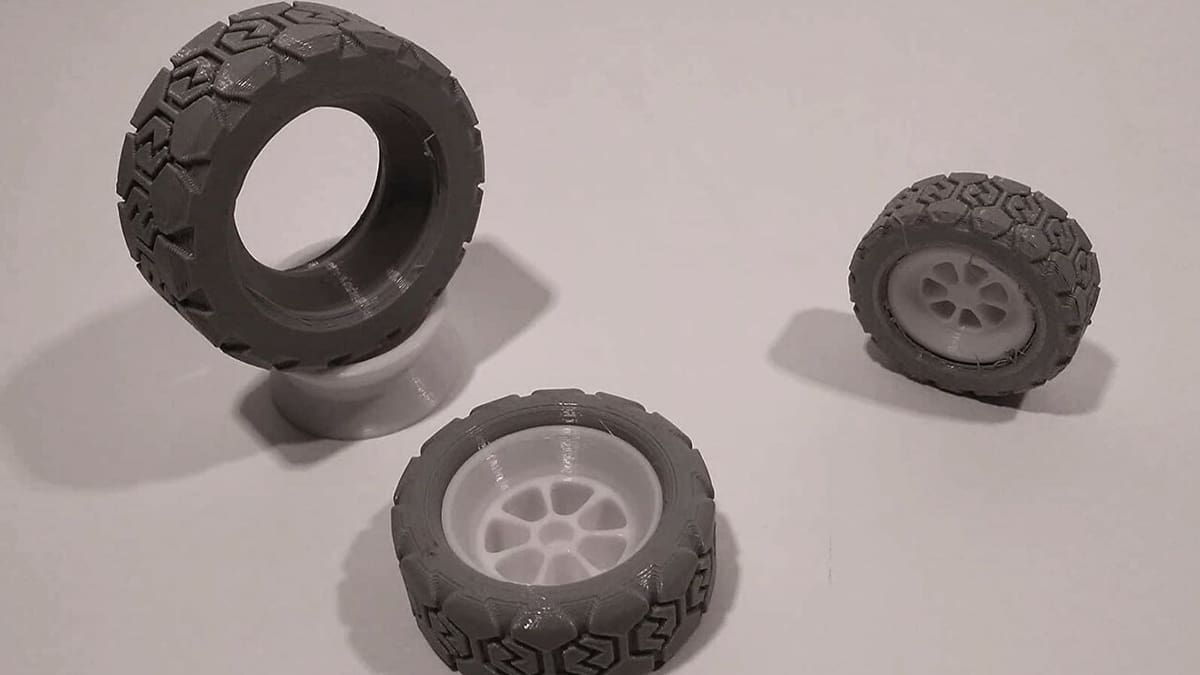
PolyFlex is Polymaker’s line of TPU filaments, permitting tinkerers to print flexible components. TPU, or thermoplastic urethane, resembles hard rubber and can make moderately flexible to rigid rubber-like parts, depending on infill and other print settings.
Polymaker offers three different specs in this family. The first is TPU90, which is quite stretchy – something that’s good for a flexible part but which can make it difficult to print. TPU95 is slightly more rigid and usually results in less jamming in the extruder. Lastly, TPU95-HF is optimized for high flow, allowing faster printing with less stringing
When printing TPU, it’s important to test and optimize your print temperature as well as use a direct extruder, although a Bowden extruder might also work if it’s finely tuned.
PolyFlex is a great choice for an end-run prototype where precision and print quality are crucial.
TPU90
- Colors: Black, white, gray, transparent, teal
- Sizes: 1.75 mm, 2.85 mm; 0.75 g
- Recommended settings: 210-230 °C hot end temp; 25-60 °C bed temp; 30-60 mm/s print speed
- Price: ∼$53/kg (∼$40/0.75-kg spool)
TPU95
- Colors: Black, white, orange, primary colors
- Sizes: 1.75 mm, 2.85 mm; 0.75 kg
- Recommended settings: 210-230 °C hot end temp; 25-60 °C bed temp; 20-40 mm/s print speed
- Price: ∼$40/kg (∼$30/0.75-kg spool)
TPU95-HF
- Colors: Black, white, transparent
- Sizes: 1.75 mm; 1 kg
- Recommended settings: 200-220 °C hot end temp; 25-50 °C bed temp; 40-100 mm/s print speed
- Price: ∼$50/kg
PolyMide
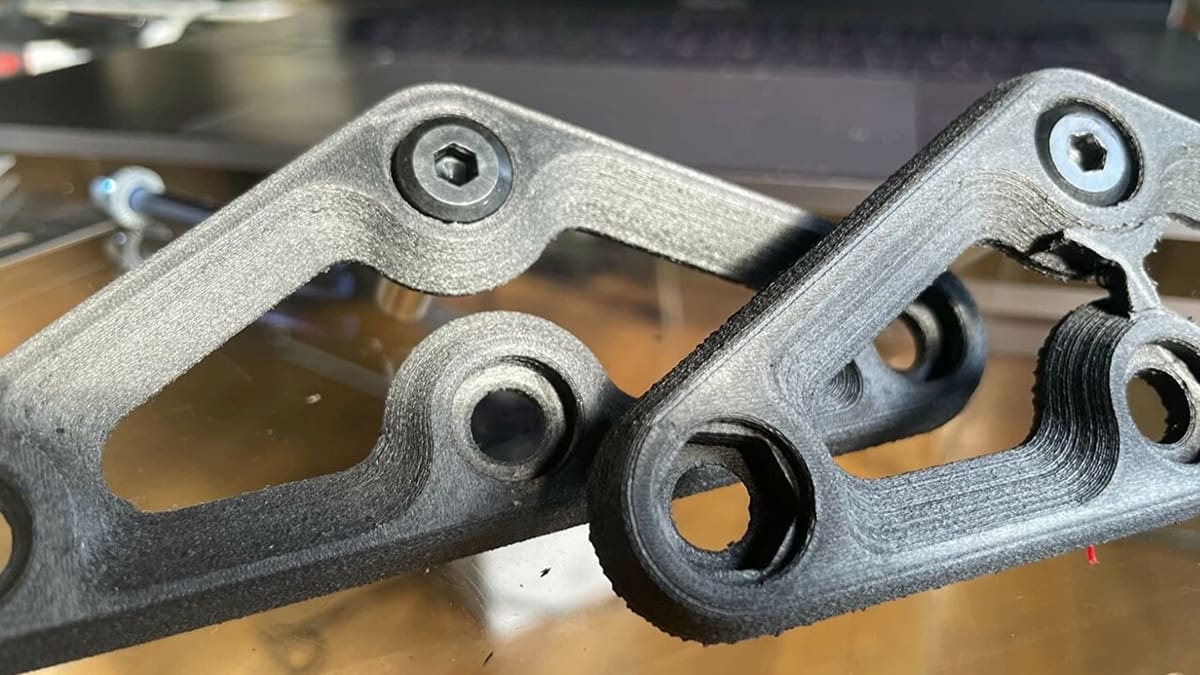
The PolyMide line is essentially filament with a nylon base reinforced with fibers, namely glass and carbon fiber. These filaments are usually for more industrial-grade applications, but a dedicated hobbyist can certainly try their hand at printing reinforced nylon.
The challenges are mostly derived from the higher print temperature of nylon, with filament becoming jammed in the nozzle due to the fibers. These filaments are indeed optimized to reduce wear on the nozzle, but any filament with structural additives will take its toll in due time.
The filaments themselves have two main variations. The first is regarding the type of nylon, with the choices being nylon 6 or 12 (PA6 or PA12). Nylon 12 will have lower moisture absorption but will come at a higher price. The other factor is regarding whether the reinforcement fiber is glass or carbon (GF or CF).
While prices may be steeper than other filaments, they could be well worth it depending on the application. These filaments may be a great choice for high-stress components that require a great deal of tensile strength.
CoPA
- Color: Black
- Sizes: 1.75 mm, 2.85 mm; 0.75 kg
- Recommended settings: 200-220 °C hot end temp; 25-50 °C bed temp; 40-100 mm/s print speed
- Price: ∼$67/kg (∼$50/0.75-kg spool)
PA6/12-CF
- Color: Black
- Sizes: 1.75 mm, 2.85 mm; 0.5 kg, 2 kg (only PA6-CF)
- Recommended settings: 280-300 °C hot end temp; 25-50 °C bed temp; 30-60 mm/s print speed
- Price: ∼$90/kg (∼$45/0.5-kg spool) for PA6-CF; ∼$160/kg (∼$80/0.5-kg spool) for PA12-CF
PA6-GF
- Colors: Gray
- Sizes: 1.75 mm, 2.85 mm; 0.5 kg, 2 kg
- Recommended settings: 280-300 °C hot end temp; 25-50 °C bed temp; 30-60 mm/s print speed
- Price: ∼$60/kg (∼$30/0.5-kg spool)
PolySonic
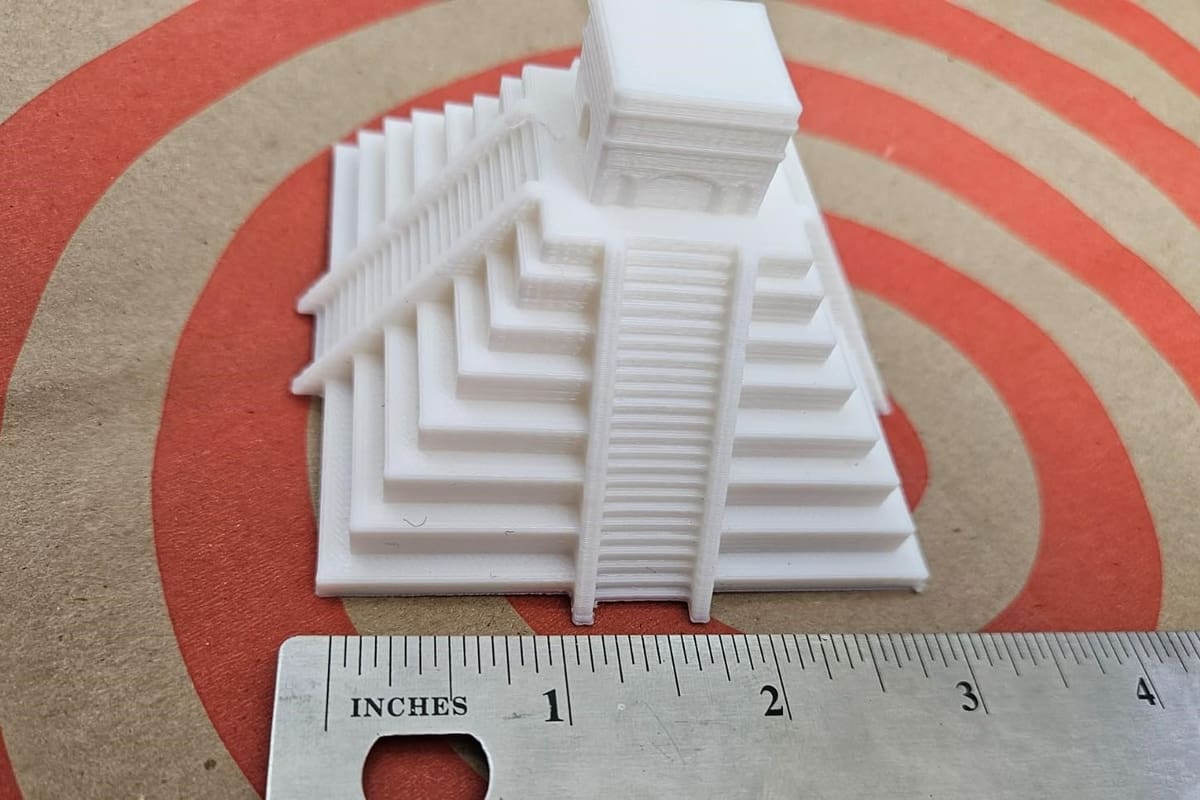
Designed for high-speed printing, the PolySonic filament series can accommodate print speeds up to 24 cubic mm per second (approximately 300 mm/s). According to Polymaker, these speeds can be achieved with no adverse impacts on print quality. Their initial testing showed similar surface quality between parts printed at 4 and 24 cubic mm per second. While the filament’s mechanical properties take a hit a high speeds, it maintains above 80% of its impact strength and 95% of its tensile strength.
The PolySonic series comes in PLA and PLA Pro versions. The latter is advertised as being a tough PLA with similar mechanical properties as ABS and PETG. Despite the differences between the two, the recommended settings for both remain the same.
The ratings for both versions are overwhelmingly positive. It’s important to keep in mind that printing at such high speeds requires increases in the temperature and flow rate settings. Since the filament is moving through the hot end so quickly, higher temperatures are necessary to ensure the filament is being properly melted. If your printer has the feature, one of the reviewers recommends doing a flow calibration to refine your flow rate settings.
- Colors: 10, including primary and secondary colors along with teal
- Sizes: 1.75 mm; 1 kg
- Recommended settings: 210-230 °C hot end temp; 30-60 °C bed temp; 100-300 mm/s print speed – These are the recommended settings for high speed printing.
- Price per kg: ∼$30
Specialty Filaments
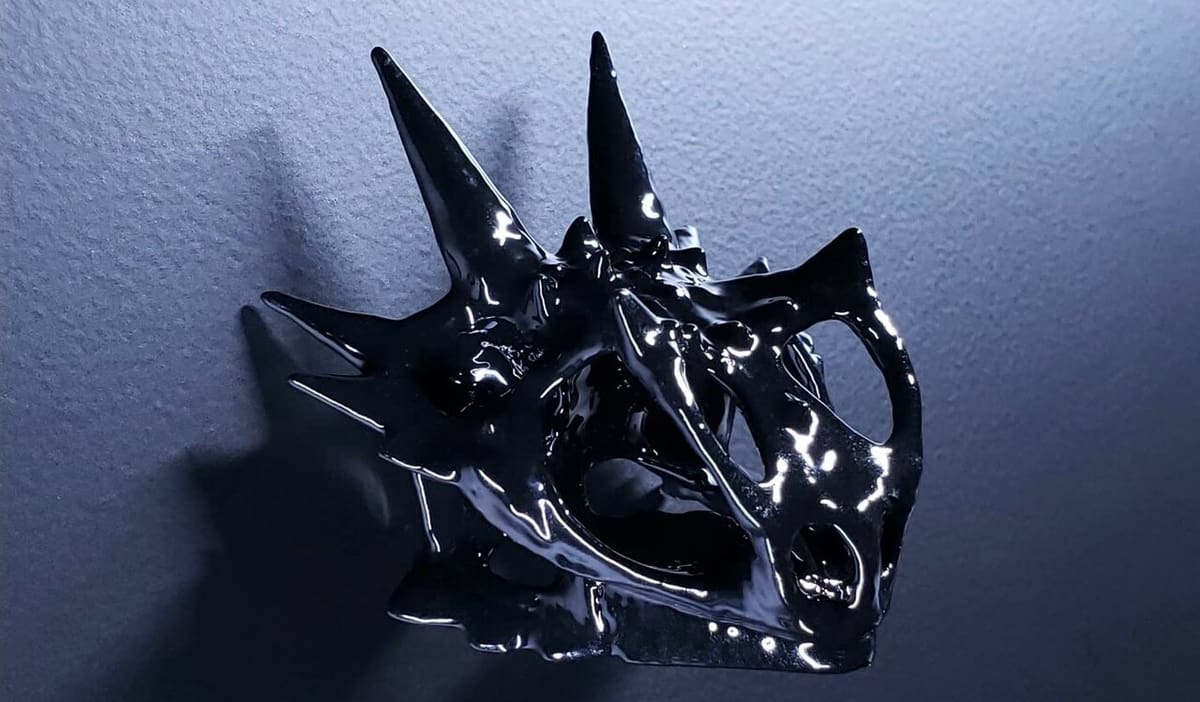
While the filament families that Polymaker has to offer are noteworthy, there are other options that are also relevant for makers.
The first is PolyWood PLA. While this filament doesn’t contain a single speck of sawdust, it uses Polymaker’s foaming technology to mimic the density and intrinsic properties of wood. It’s available in two diameters (1.75 mm, 2.85 mm), in spools of 0.6 kg, at ∼$50/kg (∼$30/0.6-kg spool).
PolySmooth is another interesting option. This material allows one to smooth away the layer lines during post-processing with a small spritz of alcohol. This effect is similar to that of acetone on ABS, but this allows the same capability with far fewer harmful chemicals. There are 12 colors of PolySmooth, including transparent, coral red, and electric blue. It’s available in two diameters (1.75 mm, 2.85 mm), in spools of 0.75 kg, at ∼$50/kg (∼$37/0.75-kg spool).
PolySupport is a breakaway filament that will essentially leave fewer marks on the final print, which allows for less sanding. It’s on the pricier side, but the convenience of a strong support that’s easy to remove may be alluring to some makers. It’s available in two diameters (1.75 mm, 2.85 mm), in spools of 0.75 kg, and is priced at ∼$49/kg (∼$30/0.75-kg spool).
PolyDissolve S1 is another take on support material. Rather than breaking away, this PVA-based filament dissolves in water. It’s designed to work with PLA, TPU, PVB, and nylon-based materials. This filament costs around $80/kg (∼$60/0.75-kg spool) and is available in both 1.75- and 2.85-mm diameters on 0.75-kg spools.
Lastly, PolyCast is designed to make molds using the lost-wax casting method. It allows one to print a model out of a wax-like material that can easily melt away during a metal cast, leaving behind the metal in the form of the 3D printed object. Despite the end product being wax-like, the filament is quite rigid, which makes it relatively easy to print with. The properties mirror PLA, and it’s available in two diameters (1.75 mm, 2.85 mm), in spools of 0.75 kg and 3 kg, at ∼$67/kg (∼$50/0.75-kg spool).
Hardware
PolyDryer
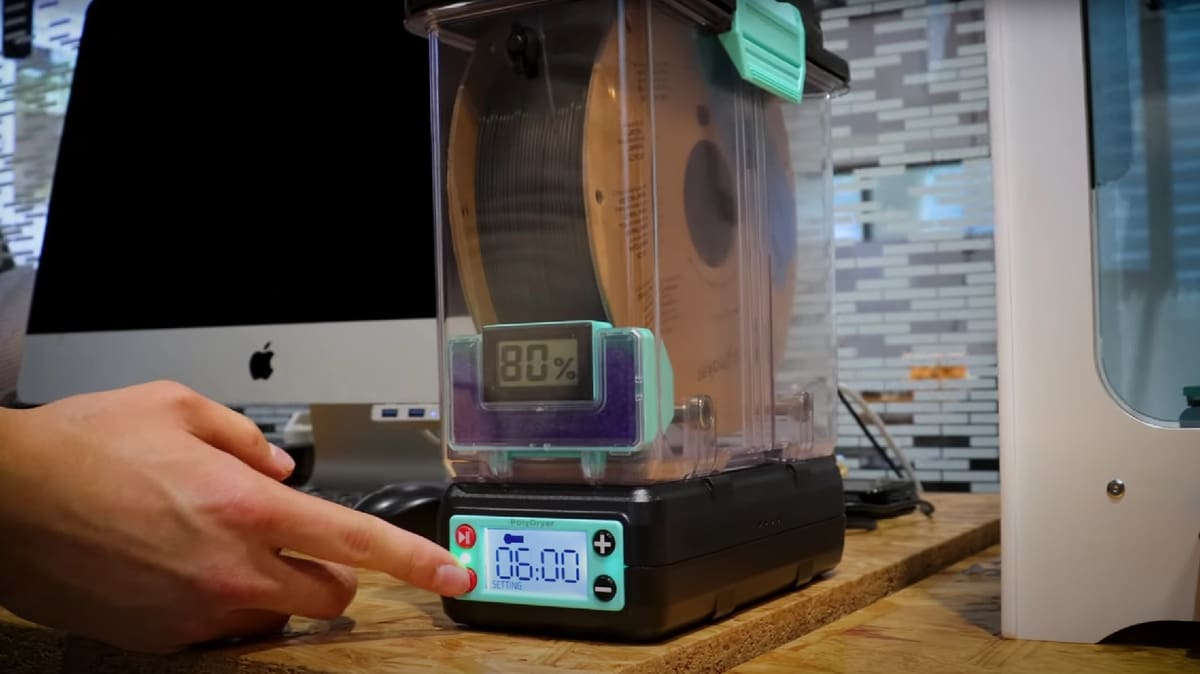
Released in Spring 2024, the PolyDryer is a multifunctional filament storage solution. First, it serves as a storage box for filament, protecting them from moisture. A desiccant container is integrated into the storage box, and a display shows the humidity level. Spools with a diameter of 205 mm and a 78-mm height can fit inside the storage box.
Second, the PolyDryer can dry filament, thanks to the Dry Dock. Simply remove the bottom airlocks and mount the storage box on top of the dock. Rather than temperature settings, users can choose between three power levels, and guidance is provided on how to choose the right power level per material.
It’s possible to dry filament before printing, but PolyDryer’s continuous drying mode also allows for drying while printing. Its spool rollers facilitate the rolling of the spool, while a PTFE tube guides the filament smoothly out of the storage box.
Initial responses to the PolyDryer include makers who balk at the price. It retails for around $80, but the storage box alone can be had for about $30. Other makers like the modularity of the PolyDriver, but with many active filaments in use and requiring drying, the cost stacks up quickly. Of course, a community of makers is going to do what they do best: Make things, so a number of mods are already emerging. The YouTube channel 3D Printing Nerd demonstrates a design from 3DPrintingSOS, which allows two storage boxes to be dried at that same time – albeit with some reduced performance.
PolyBox
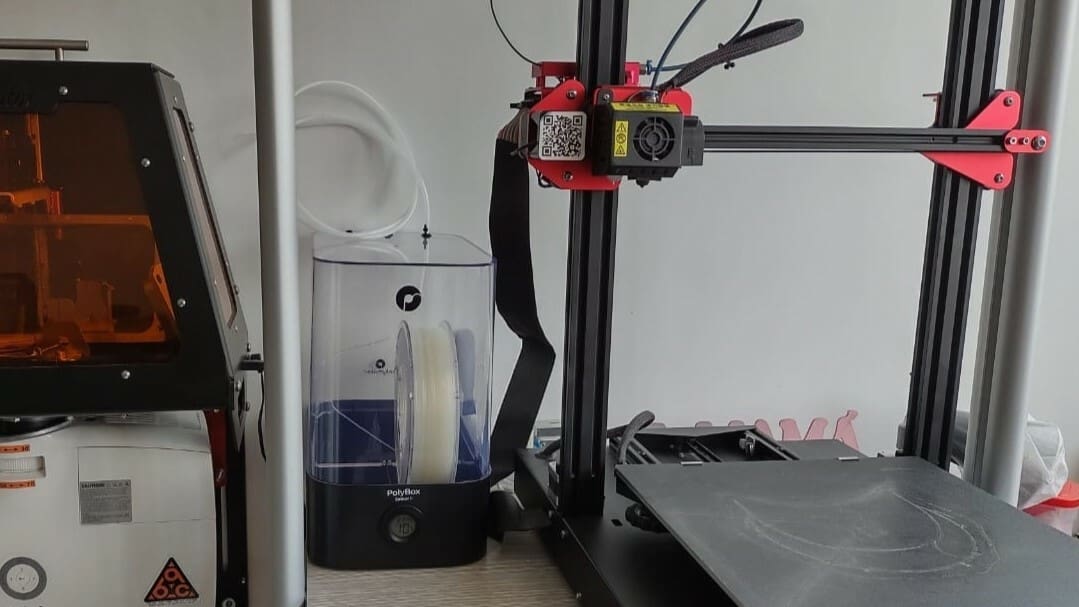
The PolyBox is a dry box that Polymaker offers. It’s important to keep 3D printer filament dry, as it can absorb moisture from the air and result in less than optimal prints, especially when it comes to PLA, PETG, and TPU.
The PolyBox itself won’t dry the filament, but it can keep it dry in a moist environment during an especially long print job or shelf duration.
The machine itself costs around $70 and can hold two rolls at a given time. While it’s not the only drybox out there, it’s certainly an interesting development in Polymaker’s expansion outside of the (strict) filament space.
Polysher
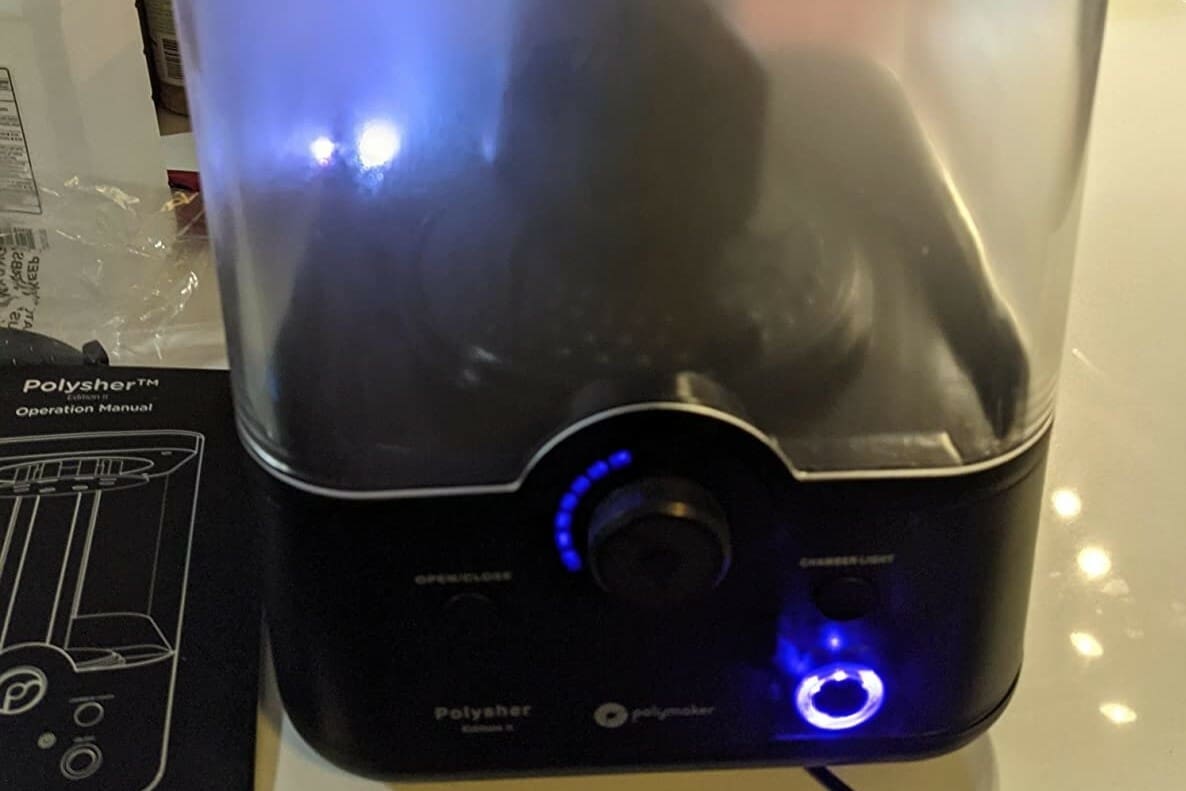
The Polysher is a post-processing solution that can remove layer lines with a fine spritz of IPA on PolySmooth and PolyCast prints. The central unit of the machine uses “nebulizers”, which control the alcohol droplet size to create the perfect mist of alcohol to smooth your prints without deforming them.
The parts it can handle have a maximum diameter size of 150 mm (5.9 in) and height of 180 mm (7.1 in). With a price tag of around $300, the Polysher is worth considering for makers who want ease of post-processing while dealing with filaments that can’t be traditionally treated.
License: The text of "Polymaker: The Brand in a Nutshell" by All3DP is licensed under a Creative Commons Attribution 4.0 International License.
CERTAIN CONTENT THAT APPEARS ON THIS SITE COMES FROM AMAZON. THIS CONTENT IS PROVIDED ‘AS IS’ AND IS SUBJECT TO CHANGE OR REMOVAL AT ANY TIME.

